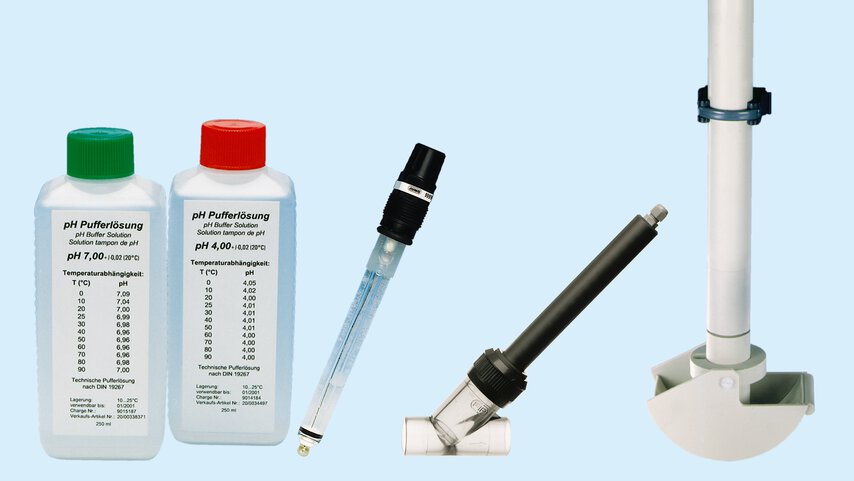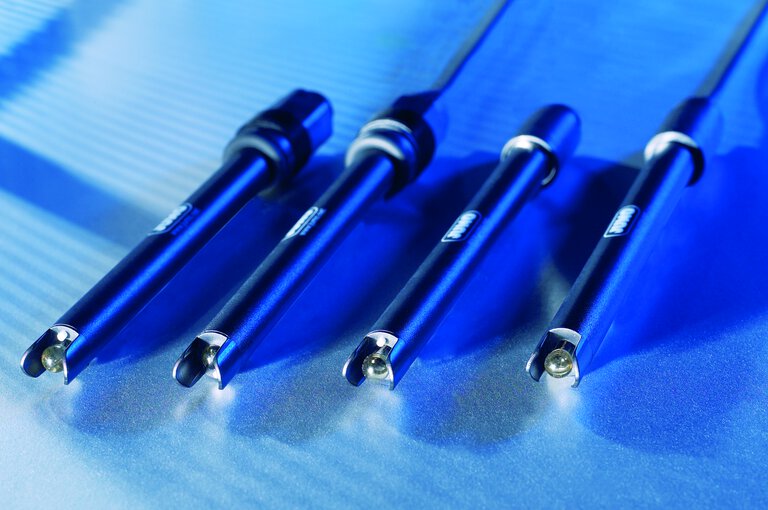

Ph meter calibration – step-by-step guide
Regular calibration of the pH meter is essential to obtain accurate pH measurements. Among other things, these determine whether the cheese in the dairy is of the right quality, whether the water in the water supply system causes corrosion damage, or whether the precipitation in the plating process wastewater treatment plant occurs at the optimum point. How to correctly calibrate a ph probe with buffers?
PH-meter – what is it used for?
The pH meter is used to measure the acidity or alkalinity of a solution, i.e. the pH value. This data is of great importance in water and environmental analysis and in almost all industries.
Types of pH probes
The pH-meter needs to be adapted to the application. Depending on the application, we distinguish between probes such as:
-
ph meter for water – dedicated to measurements in swimming pool water, aquaristics, for monitoring and treatment of drinking water and in greenhouse technology, e.g. JUMO ecoLine / JUMO BlackLine pH.
-
pH electrodes for demanding process and industrial applications e.g. JUMO tecLine HD
-
laboratory pH meter – e.g. pH meter for water JUMO labLine pH
How to care for the pH electrode? Cleaning and storage of the pH meter
Even seemingly minor things such as air bubbles, a small electrolyte content or KCI leakage can cause errors. To receive more accurate measurements and extend the life of the electrode, follow these few rules:
-
keep the pH-meter electrode clean – contamination is one of the main causes of errors in ph measurements.
-
store the pH-meter electrode in suitable storage solution – the pH meter must not be allowed to dry out or stored in distilled water, as this will shorten its life.
-
calibrate the pH meter regularly.
Do pH meters need to be calibrated?
As it is used, the fluids in the pH electrode age, which causes measurement errors. This measurement error can be determined by calibration, where the measurement result is compared to an international standard value. The accuracy of the measurements performed by the pH meter depends on, among other things, calibration.
What types of calibration are there?
There are 3 types of calibration for pH meters:
-
single-point calibration – one solution as a reference point for calibration.
Used when you want to measure a relatively constant pH value with minor deviations.
-
two-point calibration – two solutions as a reference point for calibration.
Works best with samples of different pH values. The buffer solutions should match the expected pH of the sample. In this process, the pH meter determines the slope and offset error for the pH electrode currently in use. This information allows the mV/pH equation of the pH-meter to be adjusted to the characteristics of the electrode being used.
-
multi-point calibration – multiple calibration solutions, allowing the pH meter to obtain a more accurate mV/pH equation over the range to be calibrated. This type of calibration will benefit when the range needs to extend from, for example, pH = 4 to pH = 9.
What is 3 point calibration pH meter?
In this process, the slope and offset error for the pH electrode currently in use is determined. This information allows the mV/pH equation of the pH meter to be adjusted to the characteristics of the electrode being used.
Documentation of the ph calibration
The calibration record should include the following data:
-
designation and location of the measuring point
-
serial numbers of the components of the measuring set
-
name of the responsible person - designation, serial number and expiry date of the buffer solution used
-
type of calibration (single or two-point method)
-
date and calibration data (e.g. flow behaviour, reaction behaviour, system zero, slope).
How often to calibrate the pH meter?
The frequency of calibration of the instrument depends on where it is used. The more polluted the environment, the more often the pH probe needs to be calibrated. Ideally, for the most accurate results, the instrument should be calibrated daily or before a series of measurements. In practice, we recommend calibrating the most ph meters after 3-4 weeks of operation at the latest.
The ph meter absolutely must be calibrated:
-
before first use
-
after long storage of the ph probe
-
after cleaning or replacement of the electrolyte
-
after measuring in strong solution
-
when you need a very accurate measurement
- ${title}${badge}




